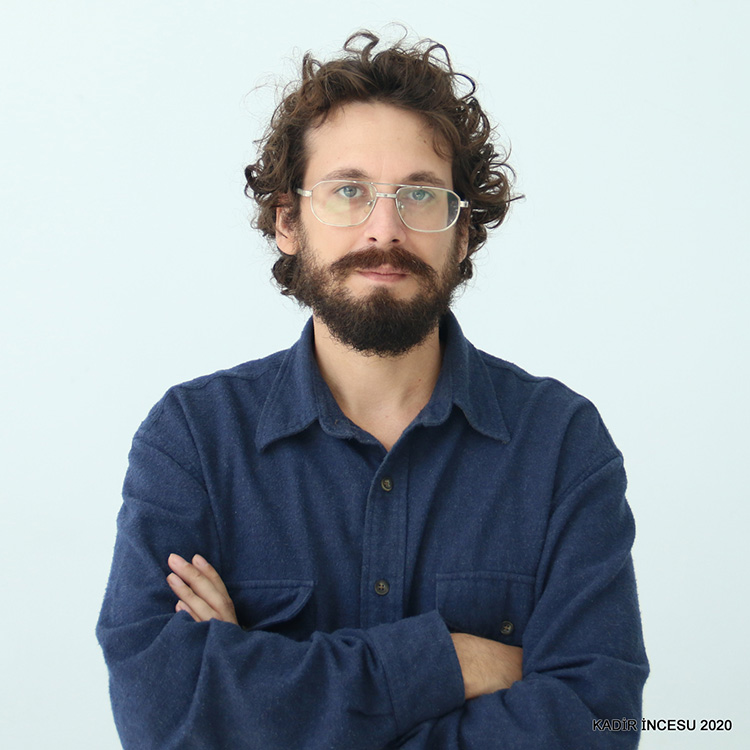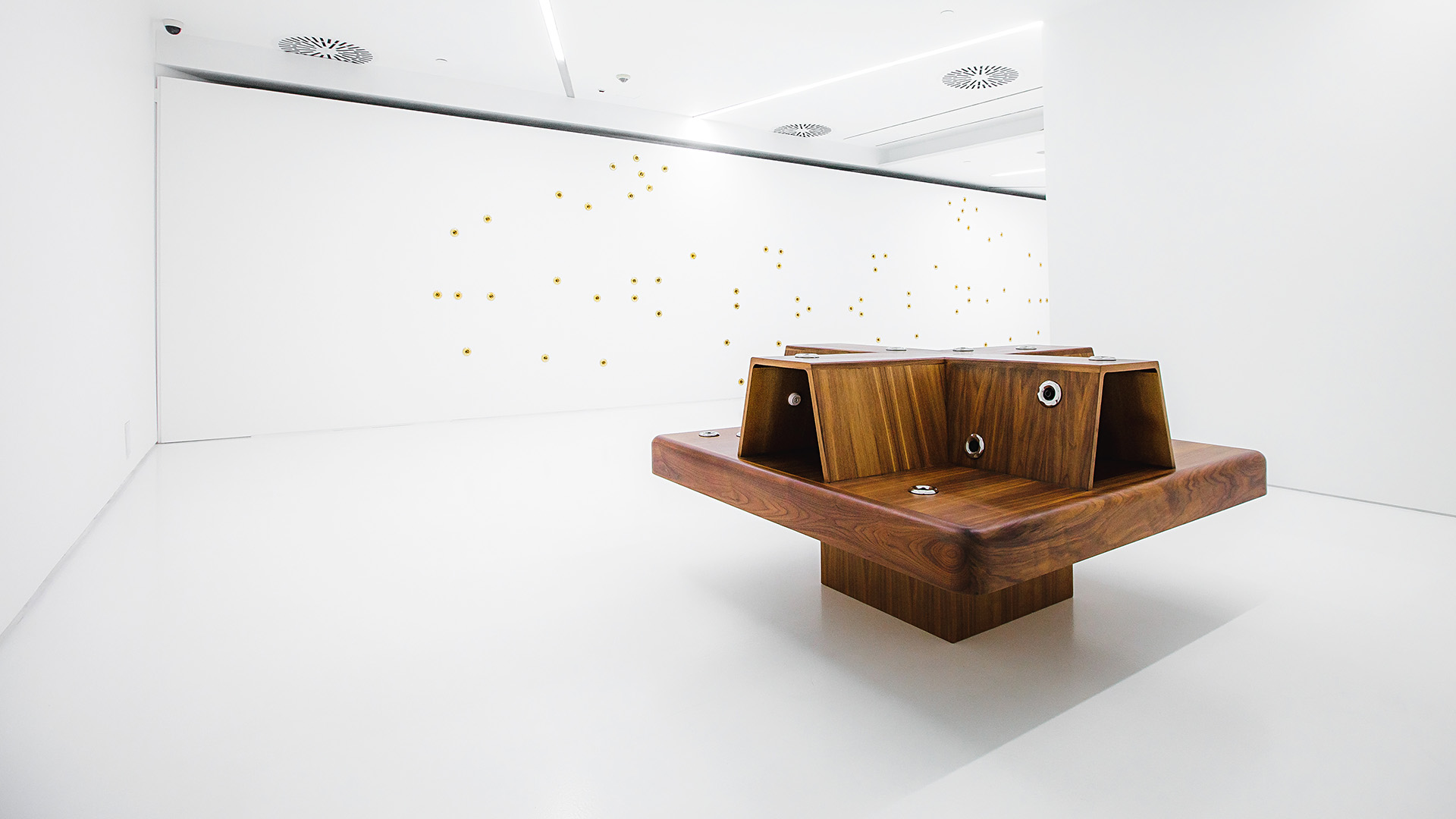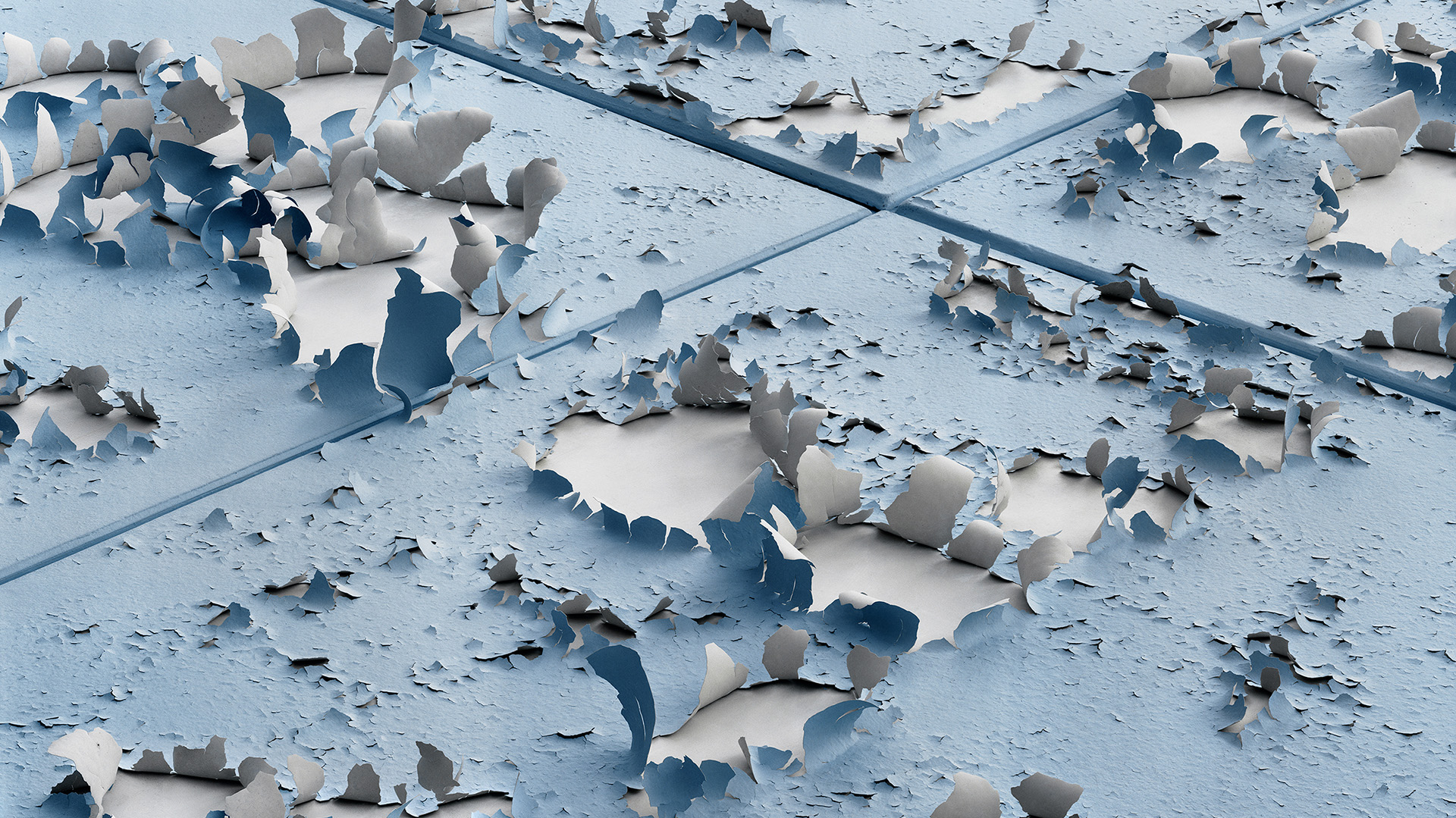Blog
Another Place / Another Present
23 February 2021 Tue
The second treatise of the series “The Transformation of the Landscape Image" revolves around Antti Laitinen’s video-performance work, It’s My Island from the Borusan Contemporary Art Collection. The article brings the work into a discussion by means of a methodological framework, which considers the notions of act, process, and sublime.
When we look at the early works of the Finland-based artist, Antti Laitinen, we readily perceive how preoccupying the human-nature relationship/tension is for his praxis. The initial signs of his desire to transform nature into an object of art and to re-establish it as a sphere wherein one can operate are observed in his early work, Bare Necessities (2002). Forming a trajectory for his future works, albeit preliminary, Bare Necessities pushes the boundaries of the artist’s body, which stands alone in nature against all its rigor, stripped off all secondary elements like clothing; hence a performance-based work whereby the artist experiences being/living in nature firsthand 2 . The work resides at a very critical threshold, seeing that it refers to and bears the mark of various artistic practices such as performance, happening, video art, and conceptual art that Laitinen would employ in his future works; it unites these diverse artistic mediums into a single process and antecedes his work, It’s My Island.
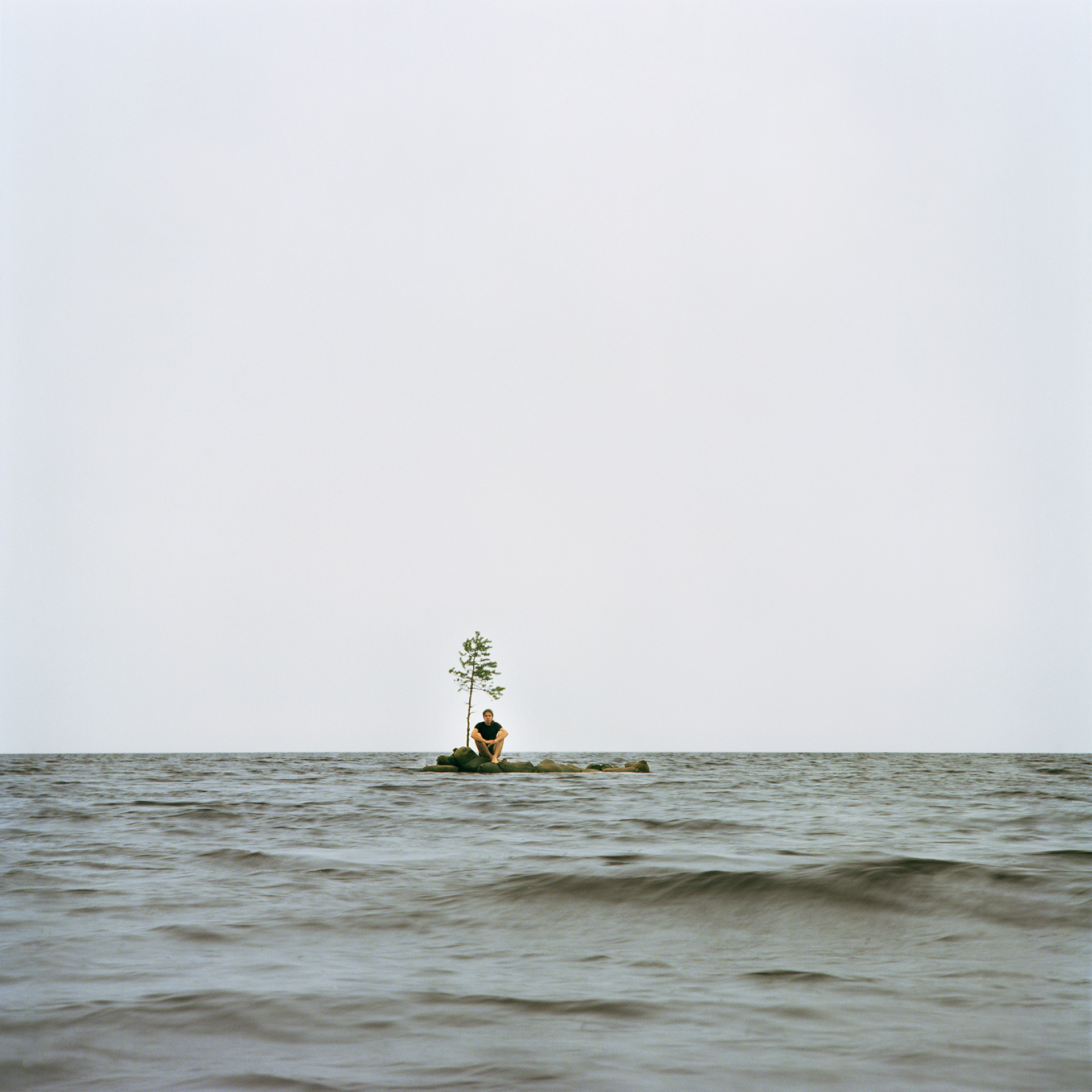
Antti Laitinen, It's My Island , 2007.
Dating back to 2007, It’s My Island epitomizes Laitinen’s works through which the artist explores the struggle with nature as an artistic act. The triggering element of the work stems from his idea of constructing an artificial island on the Baltic Sea, as clearly suggested in the title. Laitinen picks up bags filled with sand from the shoreline and drags them to the middle of the sea to form an island. This process continues until the island becomes visible from the shoreline. When considering the act, one should bear in mind the freezing cold of the Baltic Sea and the restless waters of the region. 3 Undeterred by all the adverse and grueling conditions or the obstructing, violent billows of the sea, Laitinen manages to build the island he envisaged. This performative act of the artist recalls the 19th-century English romantic painter William Turner, who -despite the death risk- had himself tied to a mast in the midst of a stormy sea for hours on end, in order to paint one of his compositions depicting a ship as virtually thrown to the tumultuous waters. 4 While this sort of an act may signify pushing the body all the way to its limits, it may also be reviewed as an attempt to comprehend the work/act in person, within the bounds of nature. The construction process of continually picking sandbags up from the same spot for three months, despite the possibility of being engulfed by the waves, can be interpreted as both a recurring performance and the conveyance of experience to the process.
The factor rendering It’s My Island akin to landscape painting is related to the images filmed during and photographed after the construction process; these images are inherent to the landscape. The enactment of the landscape may be read as the contemporary representation of a rough sea. The images filmed throughout the process are thus presented to the viewer as the manifestation of an extended landscape. In fact, the early etymological definition of landscape refers to “painting representing an extensive view of natural scenery.” 5 With 19th century northern Romanticism in particular, the aesthetic context of the landscape deviates from the traditional perception of beauty, and the genre gradually refuses to be a copy of the visible world. This alteration in the approach to landscape is diversified further with Land Art and the definition of landscape differs. Land Art essentially implies an extended, large-scale landscape painting, where the object and the setting of artwork are both nature itself. The same applies to Laitinen’s works. The artist imparts that he has gone into nature in the early days of his career because he has not had a studio and that there is an unlimited source in nature to create artworks. 6 Just as in Turner’s anecdote, the artist prefers being in nature instead of submitting an external representation. This points out to a change in the subject position, namely the change in the artist’s perception of the external world. This conception may be described as some sort of reinterpretation or redefinition. Likewise, building an island in the middle of a sea may be read as a romantic gesture, while it may also signify the reconfiguration of the given/known reality. In accordance with Donna Haraway’s “speculative fabulation,” Laitinen records his own narrative and story. The island in this narrative turns out to be a point of rest for other living beings; it becomes this station for birds where they stop and respite before they reach their destinations.
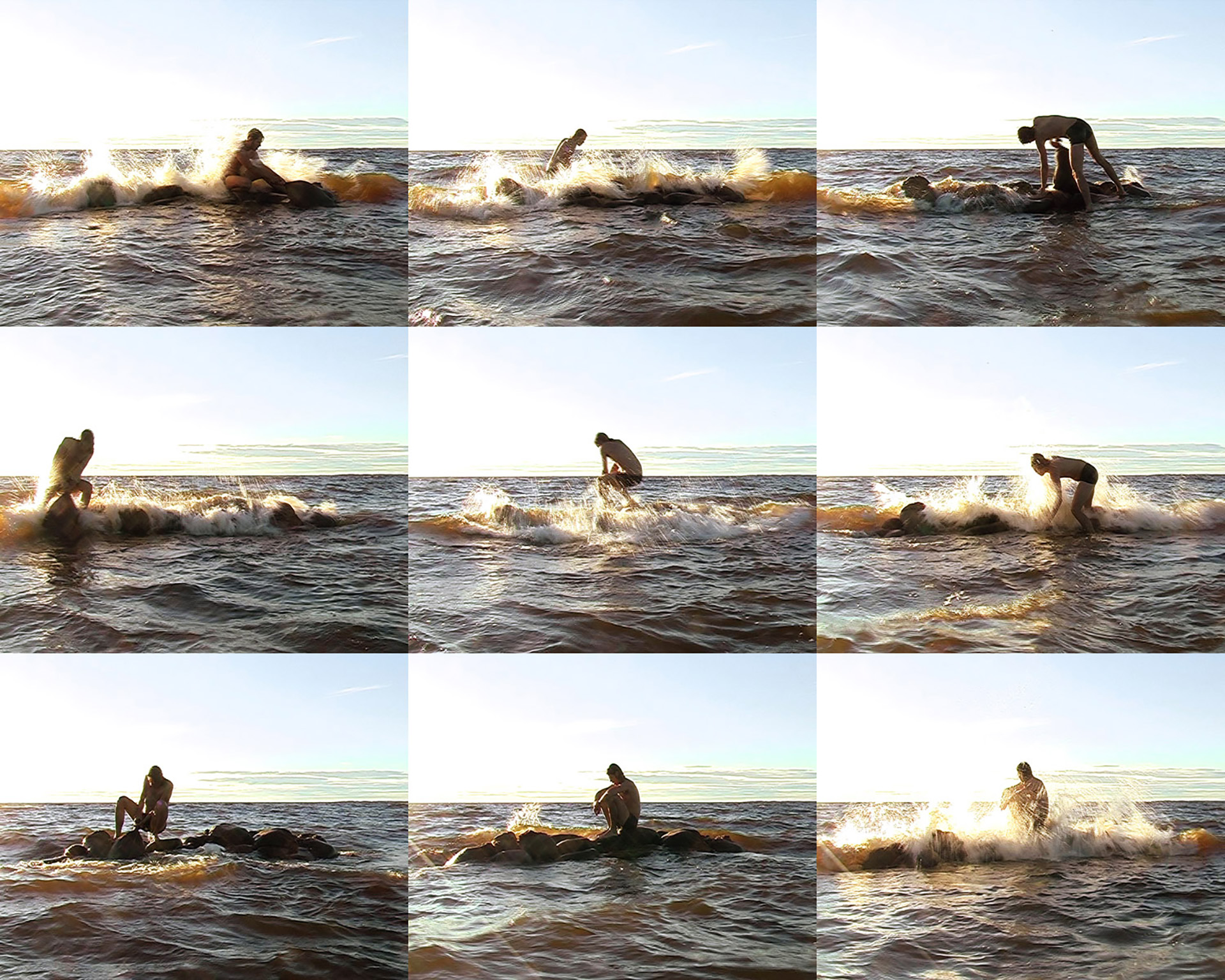
Antti Laitinen, It's My Island, 2007.
DV video installation.
The video It’s My Island opens with an image showing an endless sea and sky without any sight of land in the frame. In this perspective devoid of solid earth, space is extended to the infinite, which draws the gaze of the viewer further to an absolute abyss. This sort of tendency evokes what Robert Rosenblum states as “images of nothingness” 7 where the sea is depicted as an element that imbibes all, much like in the painting, Sunrise Over the Sea by Caspar David Friedrich. Having said that, the gloomy and hazy sky stretching over the sea towards infinity makes the viewer perceive an aesthetic pleasure in the context of the notion “sublime” that is inevitably unsettling. This has a great deal to do with the “dynamical sublime” as Kant puts it; that is to say, the rough sea creates dynamism in the landscape rather than a static structure. Although the sea is often calm and serene, the viewer may feel unsettled due to the aforementioned factors. This is implicit in the idea revealing the flip side of nature, which is much mightier and harsher than humanity, and the notion of universe/nature that is bereft of harmony, as stated by Werner Herzog. 8 The human-made island of Laitinen is ultimately bound to disappear.
It’s My Island presents the viewers various moments of the construction process with three videos assembled in triptych composition. During this performance, the viewers contemplate the artist’s desire to explore his own identity along with his communication with nature and the world. Recording his act as an output and documenting it through the medium of photography and video enables us to read Laitinen’s work in diverse contexts.
1- The title of the article is inspired by Donna Haraway’s argument on finding “another present.” Haraway argues that one must “produce a patterned vision of how to move and what to fear in the topography” in order to find an “other present.” Haraway, D. (1992). The Promises of Monsters: A Regenerative Politics for Inappropriate/d Others. Cultural Studies, Routhledge, New York, p.295.
2- Antti Laitinen’s experiment in the woods lasts four days.
3- The Baltic Sea has frequently appeared as a subject in the paintings of 19th century northern European romantic painters. German artist, Caspar David Friedrich, painted the best-known pieces of the period.
4- Lawrance Gowing, Turner: Imagination and Reality, Museum of Modern Art, London, 1966, p. 45
5- According to the definition made in 1600s, the word “landscape” is derived from Middle Dutch word “landschap” which also referred to “territory” in the 17th century. https://www.etymonline.com/word/landscape
6- From his YouTube video on July 29, 2016. https://www.youtube.com/watch?v=LWepdJMTl7s
7- Robert Rosenblum, Modern Painting and The Northern Romantic Tradition: Friedrich to Rothko, Routledge, 1977, New York, p. 10
8- Paul Cronin (Ed.) Herzog on Herzog, Faber and Faber, New York, 2002, p. 163-164
ABOUT THE WRITER
Uras Kızıl is an Istanbul based art historian, critic and researcher.
Kızıl graduated from Mimar Sinan Fine Arts University cum laude in 2015. He studied at the Berlin Freie Universität with the Erasmus program in 2014. Upon his return, he wrote his undergraduate thesis titled Romantic Thought and Romanticism in 19th Century Painting. In 2018, he graduated from Istanbul Technical University Art History Department with his thesis titled The Effects of Romanticism on 20th Century Art. His master's thesis was supported by ITU BAP. Kızıl continues his doctoral studies at Istanbul Technical University.
Working as the archive manager of Galeri Nev Istanbul between 2018-2020, Kızıl's texts have been published in publications including such as e-skop, Manifold, Argonotlar, K24, as well as in exhibition catalogs and books since 2015.
Kızıl, who is a member of AICA, teaches at the Department of Art Management at Kültür University.
